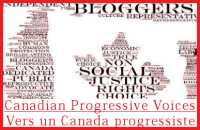Currently I'm in the process of reading Ron Suskind's book The One Percent Doctrine. So far, it can be highly recommended. (My local county library only had the Large Print version available . . . I could get used to reading this size font, let me tell you - Plus, you just fly through the pages!)
About a quarter of the way into the book I found the following confirmations of the methods that bushco utilized to handle events post 9-11: (Emphasis mine.)
To prevent anonymous leaks - the traditional method for officials to pass information to members of the press and, through them, to the public and others in the administration, including the President - the Bush team issued government cell phones to a wide array of officials and mandated that they be used. This way, the were able to monitor incoming and outgoing calls from both office phones and mobile phones. What's more, they issued strict orders, with penalties that could include immediate dismissal, that no one should speak to a member of the press without permission - permission that was generally controlled by the White House communications office.
Karen Hughes, who oversaw that office and met each morning with her team of several dozen media officers from across the government, was convinced that the mainstream press was dominated by political opponents, and in any event was attracted to "conflict" stories. Her ideas was, as much as possible, to ignore the major newspaper, magazines, and television networks, all of which had become accustomed, over decades, to having regular meetings with a sitting president. No More. Their access would be limited and carefully managed. What's more, the President would have only about one third as many individual press conferences as Bill Clinton, or on fifth as many as the first Bush. The goal was to keep this President away from impromptu exchanges with informed questioners, never one of his strong suits.
Informed questions, however, could also be killed at their source. They were winnowed, steadily, by a broadened standard of what is classified. The initiative was a pet project of the Vice President, who'd long believed that public and congressional scrutiny of presidents was weakening executive power. With Cheney's guidance, documents were being classified at twice the rate of the previous administration.
And this later:
As captives were flowing into Camp X-ray in Guantanamo, the White House and Justice Department had produced some preliminary guidance on interrogation. Most noteworthy was a memo from White House counsel Al Gonzales in late January 2002, asserting that the Geneva Conventions regarding prisoners of war did not apply to the United States in the treatment of detainees captured in Afghanistan.
None of this is news to those of us who follow events and reporting on how bushco has in the past and continues to operate. Perhaps one day the general public will also accept the fact that this administration has done more damage to individual rights than any other in recent history . . . .
Subscribe to:
Post Comments (Atom)



No comments:
Post a Comment